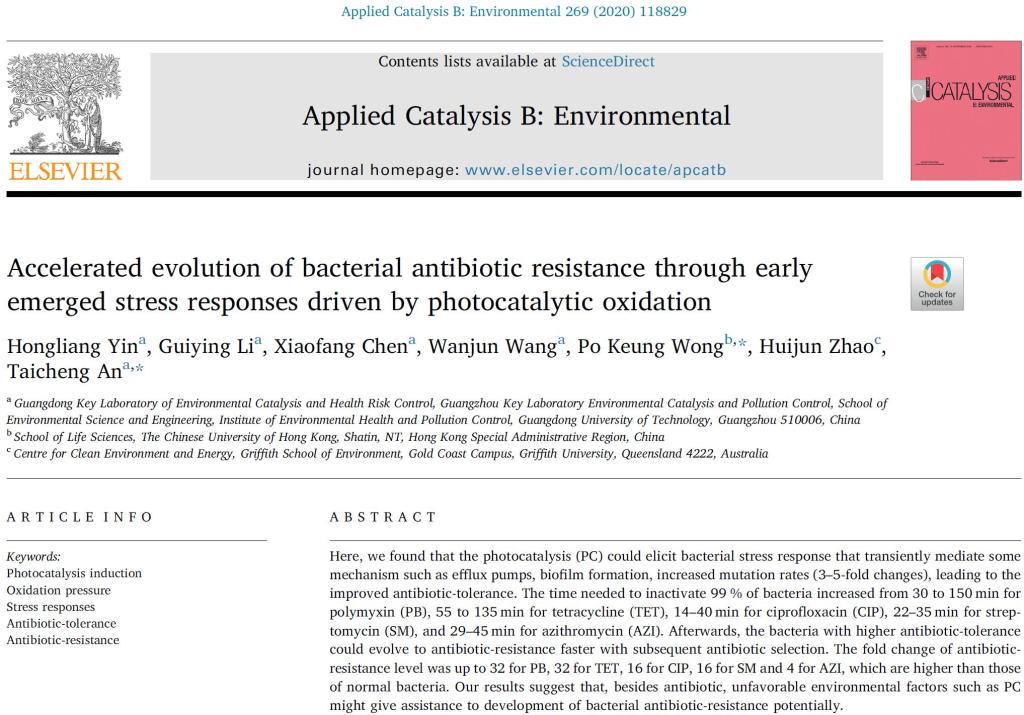Download Address:https://doi.org/10.1016/j.apcatb.2020.118829
Hongliang Yin, Guiying Li, Xiaofang Chen, Wanjun Wang, Po Keung Wong*, Huijun Zhao, Taicheng An*. Accelerated evolution of bacterial antibiotic resistance through early emerged stress responses driven by photocatalytic oxidation. Appl. Catal. B: Environ. 2020, 269:118829.

ABSTRACT
Here, we found that the photocatalysis (PC) could elicit bacterial stress response that transiently mediate some mechanism such as efflux pumps, biofilm formation, increased mutation rates (3-5-fold changes), leading to the improved antibiotic-tolerance. The time needed to inactivate 99% of bacteria increased from 30 to 150 min for polymyxin (PB), 55 to 135 min for tetracycline (TET), 14 to 40 min for ciprofloxacin (CIP), 22 to 35 min for streptomycin (SM), and 29 to 45 min for azithromycin (AZI). Afterwards, the bacteria with higher antibiotic-tolerance could evolve to antibiotic-resistance faster with subsequent antibiotic selection. The fold change of antibiotic-resistance level was up to 32 for PB, 32 for TET, 16 for CIP, 16 for SM and 4 for AZI, which are higher than those of normal bacteria. Our results suggest that, besides antibiotic, unfavorable environmental factors such as PC might give assistance to development of bacterial antibiotic-resistance potentially.

